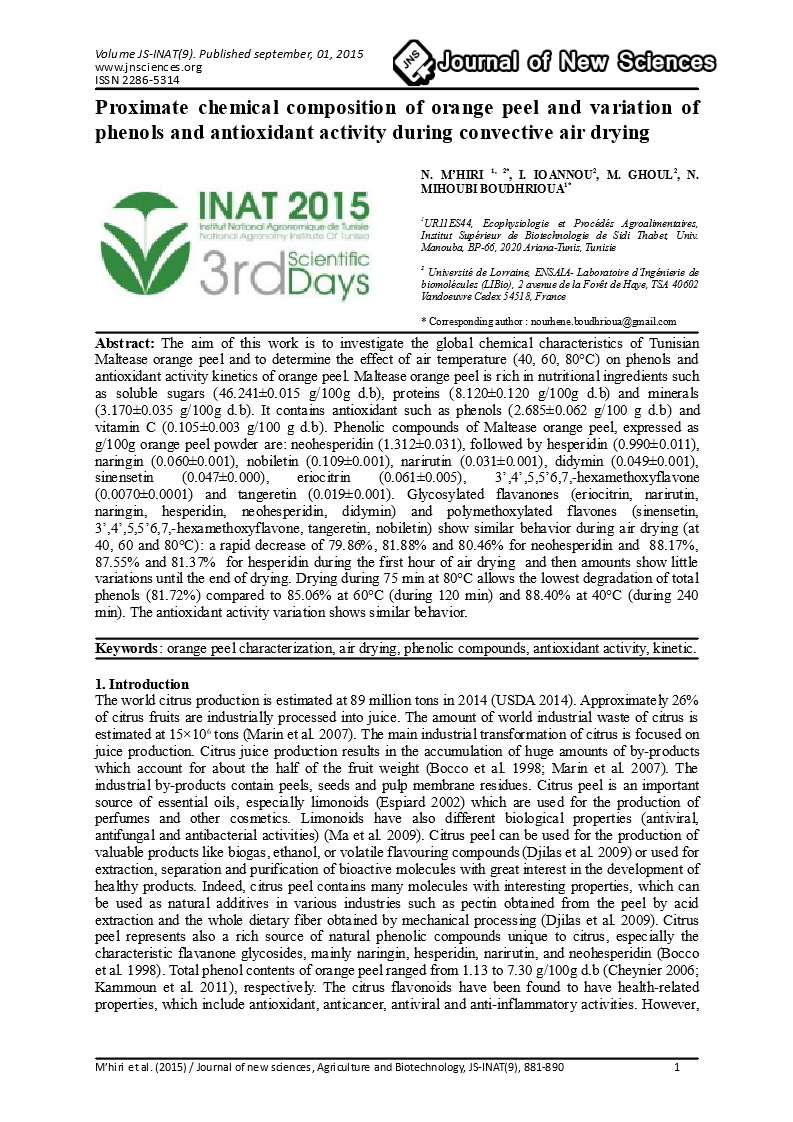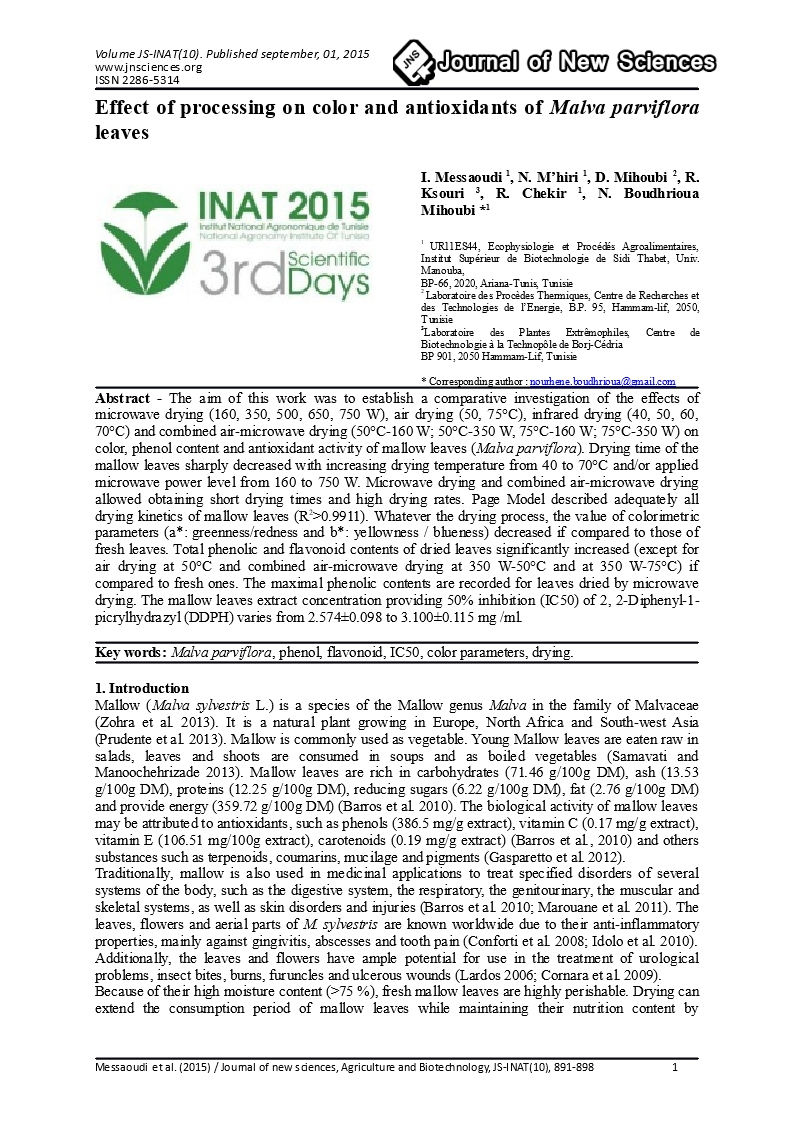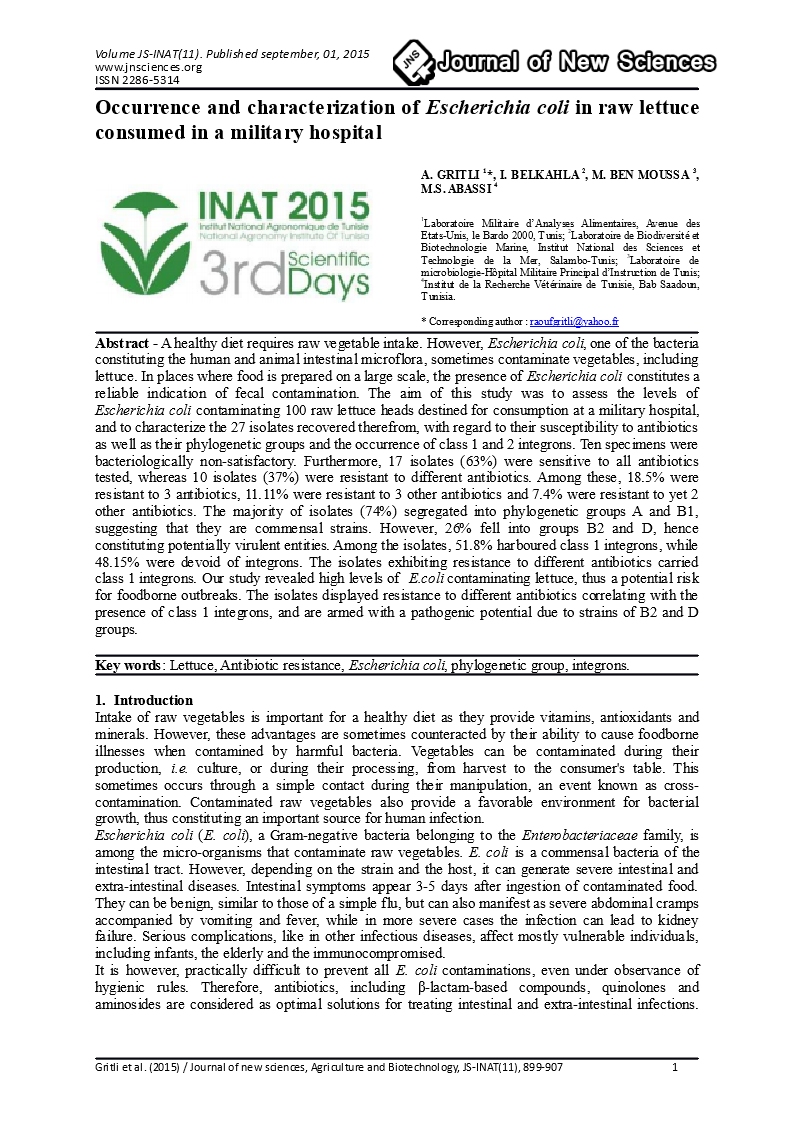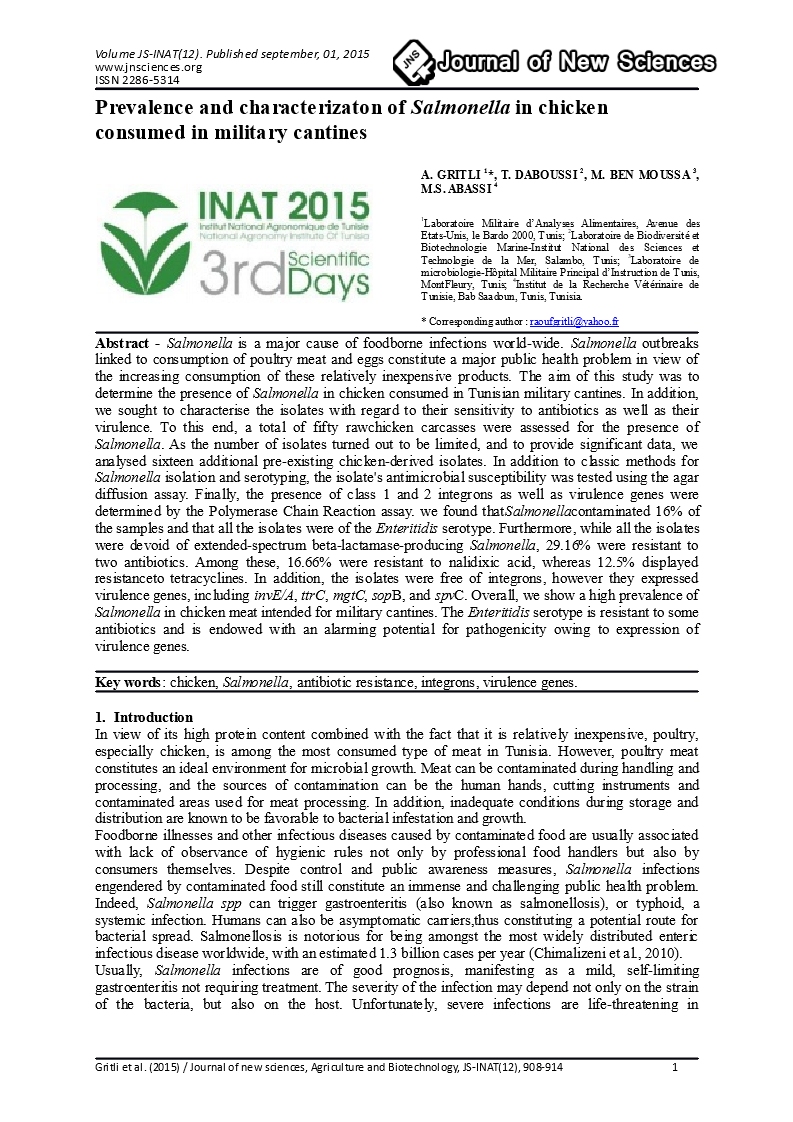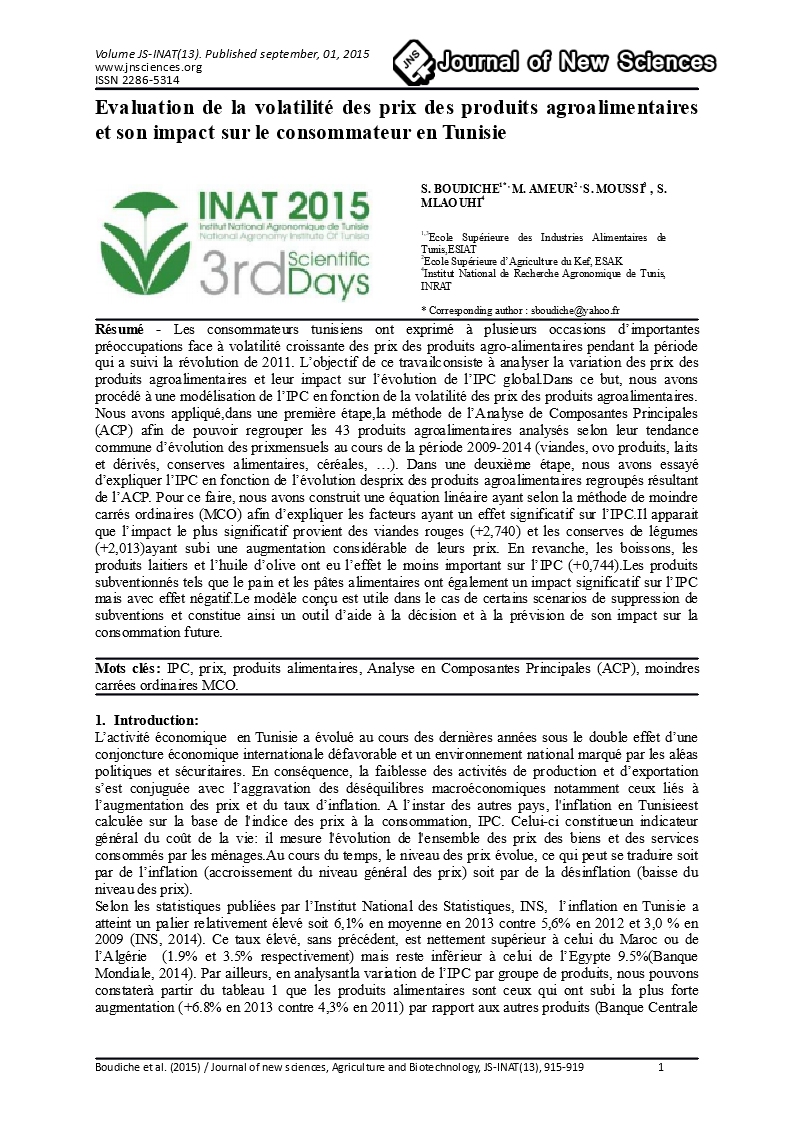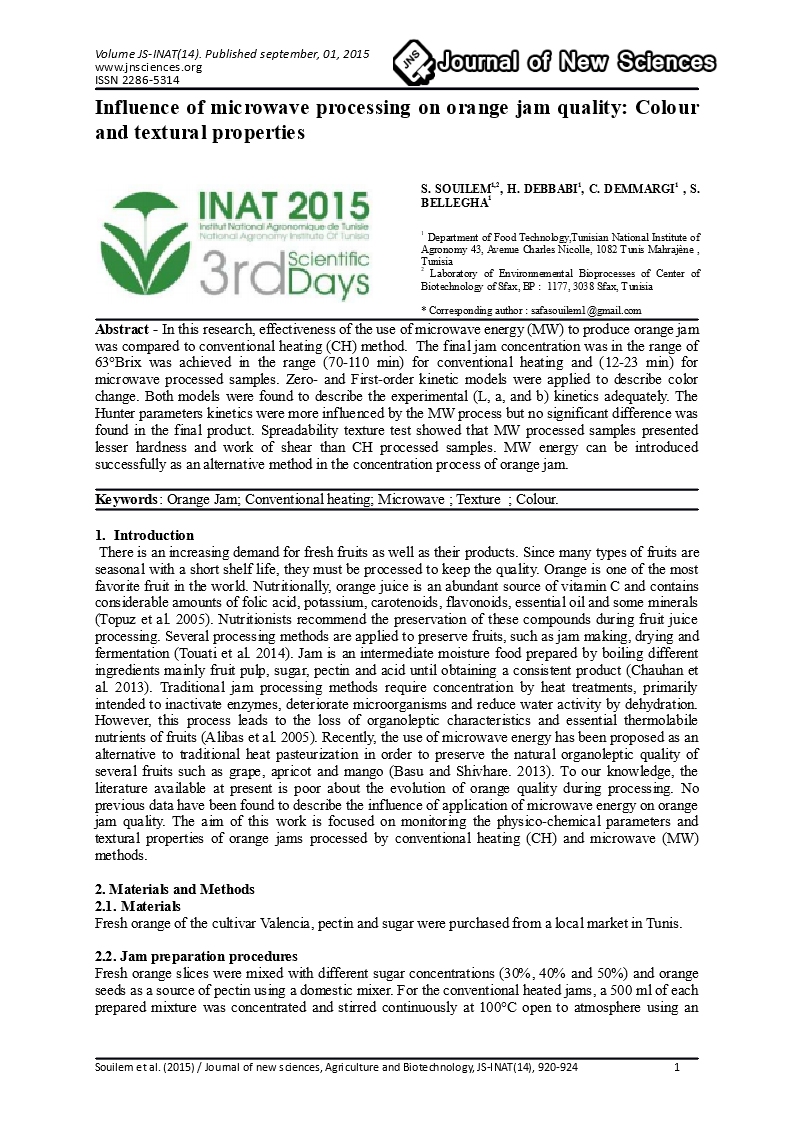- Category: Volume Spécial (Journées Scientifiques de l'INAT)
- Hits: 14294
Etude des Propriétés Physico-chimiques de l’Huile de Fruit de Laurus nobilis et Effet de la Macération par les Fruits et les Feuilles de Laurus nobilis sur les Propriétés Physico-Chimiques et la Stabilité Oxydative de l’Huile d’Olive
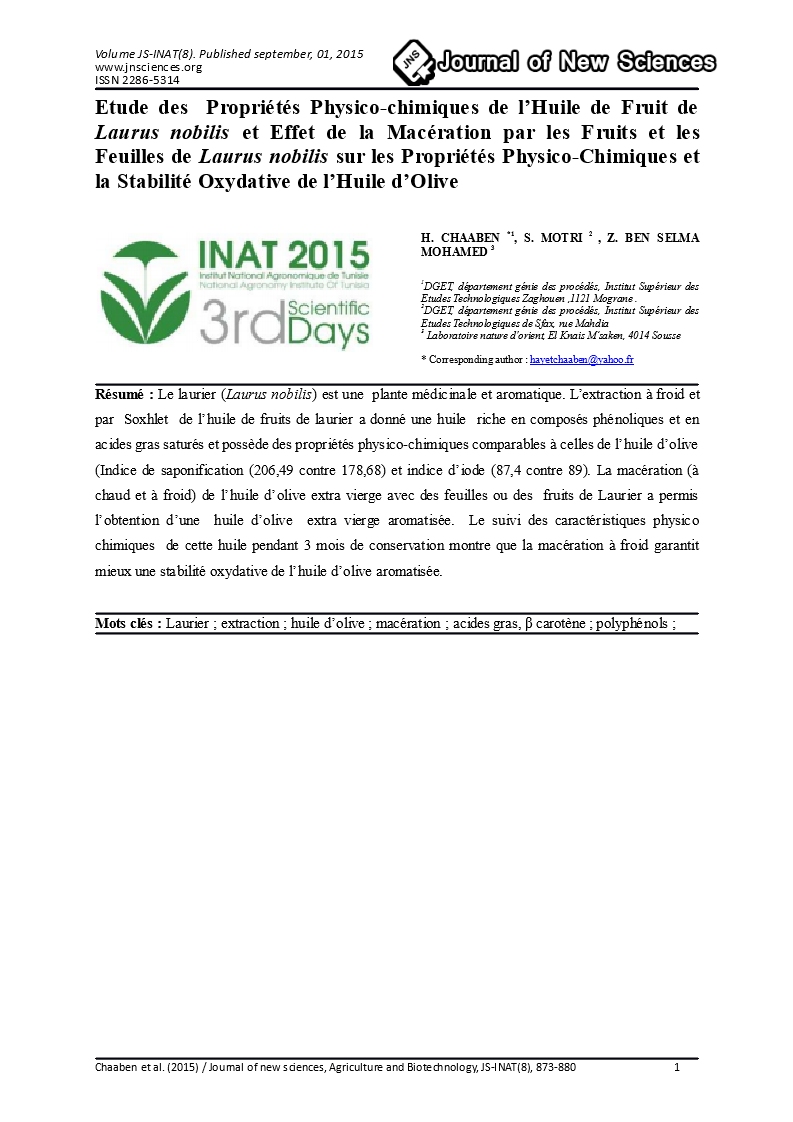
H. Chaaben *1
S. Motri 2
Z. Ben Selma Mohamed 3
1DGET, département génie des procédés, Institut Supérieur des Etudes Technologiques Zaghouen ,1121 Mograne .
2DGET, département génie des procédés, Institut Supérieur des Etudes Technologiques de Sfax, rue Mahdia
3 Laboratoire nature d'orient, El Knais M’saken, 4014 Sousse
Résumé : Le laurier (Laurus nobilis) est une plante médicinale et aromatique. L’extraction à froid et par Soxhlet de l’huile de fruits de laurier a donné une huile riche en composés phénoliques et en acides gras saturés et possède des propriétés physico-chimiques comparables à celles de l’huile d’olive (Indice de saponification (206,49 contre 178,68) et indice d’iode (87,4 contre 89). La macération (à chaud et à froid) de l’huile d’olive extra vierge avec des feuilles ou des fruits de Laurier a permis l’obtention d’une huile d’olive extra vierge aromatisée. Le suivi des caractéristiques physico chimiques de cette huile pendant 3 mois de conservation montre que la macération à froid garantit mieux une stabilité oxydative de l’huile d’olive aromatisée.
Mots clés : Laurier ; extraction ; huile d’olive ; macération ; acides gras, β carotène ; polyphénols

